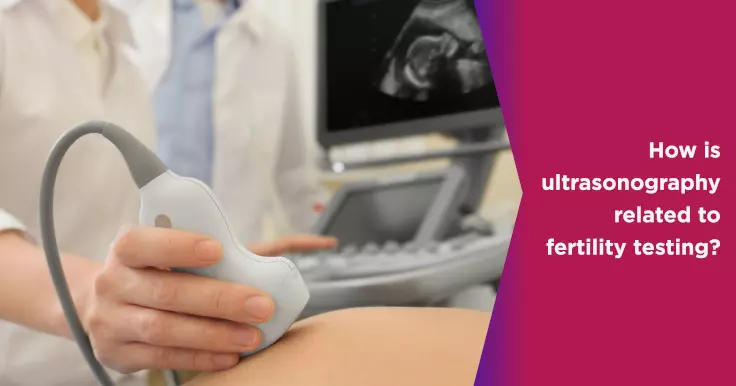The Role of Ultrasonography in Fertility Testing

An Ultrasound (USG) is a common gynecological procedure. This involves the use of high-frequency sound waves to create an image of the internal structure of the reproductive organs. During Ultrasound, a device called transducer is moved over the body which emits high-frequency sound waves that are then bounced off the internal organs of the pelvic cavity. The device captures these bounced waves and uses them to create an image of the organs on a computer screen.
Internal vs External Ultrasounds
There are two types of ultrasounds - external and internal. An external ultrasound is conducted by using a probe over the abdomen while in the case of the latter, a probe is inserted into the vagina. This can be described as thin, long probe that is very similar to a vaginal speculum. Women undergoing an external ultrasound are advised to drink plenty of fluids to fill up the bladder so as to make the uterus more clearly visible. This is not required in the case of an internal ultrasound.
Internal ultrasounds give a much clearer picture of the reproductive organs as the probe is much closer to the organs. When it comes to infertility treatment such as IVF, ultrasounds are used at various stages of treatment.
USG for Fertility Testing
An ultrasound is usually the first test advised in cases of infertility. This test plays an important role in determining if the patient is infertile and the cause of infertility. Some of the ways an ultrasound can indicate infertility are:
- Presence or absence of both ovaries and uterus
- Shape, size and position of the uterus
- Presence of fibroids in the uterus and their size
- Number of follicles present in the uterus
- Presence of ovarian cysts
- Presence of endometriosis
- Abnormal fallopian tubes
USG to Monitor Fertility Treatment
One of the common ways of treating infertility is through medication to aid in the development of eggs in the ovaries. Regular ultrasounds can be used to check the effect of these medications. Through an ultrasound, the doctor can see how the eggs are developing. If the patient is undergoing IVF treatment, this information can be used to determine when the eggs should be harvested. In other cases, it may be used to determine the ideal time to stimulate ovulation or the release of mature eggs from the ovaries.
An ultrasound may also be used to check the development of the tissue lining the inside of the uterus. If this tissue is not thick enough, the embryo has a very low chance of being successfully implanted.
External ultrasounds are used in IVF when an embryo is being implanted in the patient's uterus. At this stage, it is used to guide the embryo to the uterus.
USG to Monitor Pregnancy
After a pregnancy is confirmed, regular ultrasounds are a must. These ultrasounds help the doctor check on the development of the fetus and monitor the pregnancy. It can also be used to diagnose an ectopic pregnancy. This refers to a pregnancy where the embryo is implanted outside the uterus. Ectopic pregnancies do not continue till full term as the fetus cannot get the nutrition it needs. In addition, this condition may be fatal for the mother.
 Infertility Counselling
Infertility Counselling Female Infertility Treatment
Female Infertility Treatment Andrology Treatment
Andrology Treatment Fertility Enhancing Surgeries - Female
Fertility Enhancing Surgeries - Female Fertility Enhancing Surgeries - Male
Fertility Enhancing Surgeries - Male Endoscopy Treatment
Endoscopy Treatment IUI Treatment
IUI Treatment IVF Treatment
IVF Treatment ICSI Treatment
ICSI Treatment Advanced IVF Solutions
Advanced IVF Solutions Embryology
Embryology Vitrification Egg, Embryo, Sperm Freezing
Vitrification Egg, Embryo, Sperm Freezing Preimplantation Genetic Testing (PGT)
Preimplantation Genetic Testing (PGT) Donation Program Embryo / Egg / Sperm
Donation Program Embryo / Egg / Sperm Self-cycleTM IVF
Self-cycleTM IVF

 Self-cycleTM IVF
Self-cycleTM IVF









